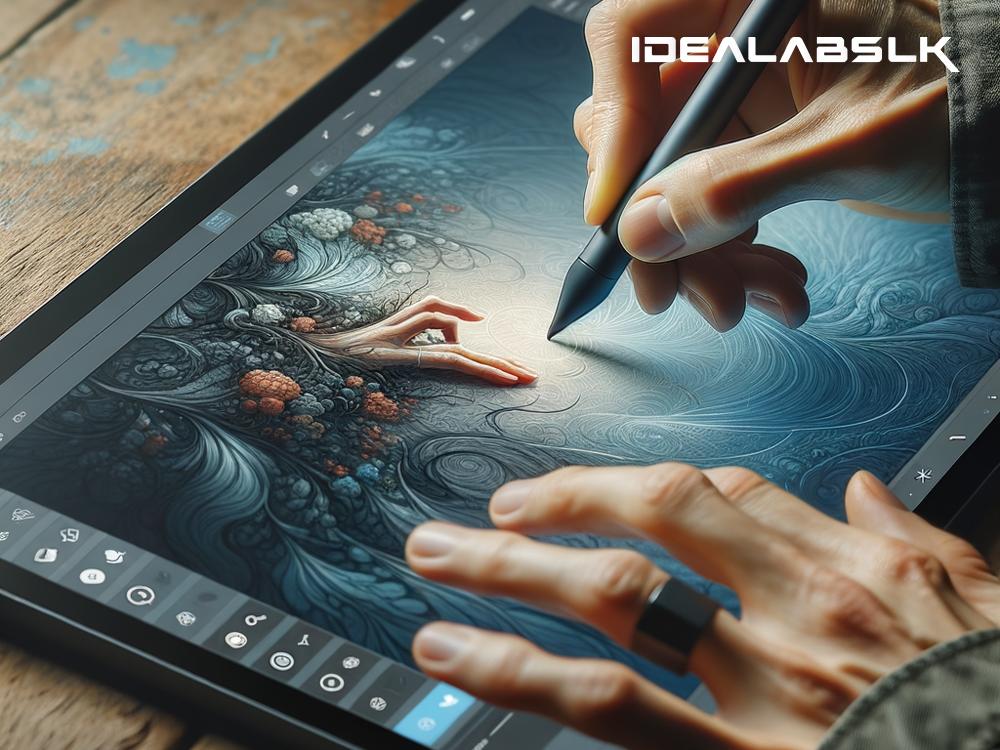Simplifying the Magic: How AI Transforms Smart Styluses for Advanced Drawing
In the realm of digital art, smart styluses equipped with Artificial Intelligence (AI) are quickly becoming indispensable tools for artists and designers. These innovative gadgets are revolutionizing the way we create, allowing for a fusion of traditional drawing techniques with the cutting-edge capabilities of AI technology. But how exactly does AI work in smart styluses, and what makes it so transformative for advanced drawing gadgets? Let's break it down into simpler terms.
Understanding the Basics
Before we dive into the specifics, it's essential to have a basic understanding of what AI is. In simple terms, AI refers to computer systems designed to perform tasks that typically require human intelligence. This includes learning from experience, recognizing patterns, understanding natural language, and making decisions. When integrated into a smart stylus, AI enhances its functionality, making it much more than just a digital pen.
The AI-Driven Magic in Smart Styluses
Smart styluses equipped with AI take drawing and designing to a new level. Here's how:
1. Pressure Sensitivity and Stroke Adaptation
One of the primary features of a smart stylus is pressure sensitivity, which allows it to mimic the feel of traditional drawing tools. By applying AI, the stylus can learn from the user's drawing habits and adapt its pressure sensitivity accordingly. This means the more you use it, the better it responds to your unique touch, making the drawing experience incredibly intuitive.
2. Real-time Feedback for Improvement
Imagine having a personal art teacher guiding your every stroke. AI in smart styluses can offer real-time feedback on your drawing technique, suggesting improvements and correcting errors as you go. This continuous learning process not only enhances your skills but also refines the stylus's understanding of your artistic preferences.
3. Gesture Recognition
With AI, smart styluses transcend the limitations of mere point-and-draw functionality. They can recognize specific gestures to perform tasks like undoing actions, changing brushes, or adjusting colors without disrupting the flow of creativity. This capability turns a stylus into a multifunctional tool, streamlining the drawing process and making it more efficient.
4. Personalized Settings and Presets
Everyone has their preferred drawing style and tools. AI-driven smart styluses can remember your favorite settings and automatically adjust to them the next time you start a project. This personalized approach saves time and lets you dive straight into the creative process without the need for manual adjustments.
5. Seamless Integration with Drawing Apps
Smart styluses powered by AI are designed to work seamlessly with a wide range of drawing and design applications. They can intelligently adapt to different software, optimizing their functionality to enhance the user experience. Whether you're sketching, painting, or designing, an AI-equipped stylus ensures smooth and responsive interactions across various platforms.
The Impact on the Creative Process
The integration of AI in smart styluses profoundly impacts the creative process. It not only simplifies technical aspects but also opens up new possibilities for experimentation and expression. Artists and designers can explore different styles and techniques with greater ease, pushing the boundaries of digital art. Furthermore, the personalized feedback and adaptive learning capabilities foster a closer relationship between the artist and their digital canvas, making the entire experience more natural and intuitive.
Looking to the Future
The future of AI in smart styluses is incredibly promising. As AI technology continues to advance, we can expect even more sophisticated features that further blur the lines between traditional and digital art. From even more accurate pressure sensitivity to predictive drawing assistance, the potential for innovation is boundless.
In conclusion, the integration of AI into smart styluses is more than just a technological advancement; it's a transformation of the digital drawing experience. By making it easier, more intuitive, and infinitely more creative, AI is opening up a world of possibilities for artists and designers. As we look forward to future developments, one thing is certain: the art of drawing is being redefined, and it's more exciting than ever.

